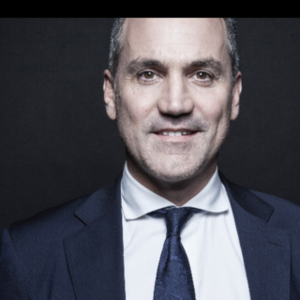The hot new income asset class

The newly launched Lark Mortgage Income Fund exploits the growth in southeast Queensland after Melbourne residents fled the city

Why did you start up Lark Mortgage Income Fund? Was there a need for another mortgage fund in the market?
The fund was launched in partnership between Ark Asset Management and Lucerne.We noticed a growing appetite for private debt within Lucern's investor base. We invest in markets that have strong fundamentals, and when you look at the population story, Victoria lost about 44,000 last year, and Queensland gained the same number.
One of the emerging trends we identified was the migration out of Victoria and to a lesser extent New South Wales triggered by the pandemic. Queensland is the beneficiary. I think the shift is permanent. The pandemic has changed the ways of working and flexible and remote working arrangements are here to stay.
I do think that Queensland is likely to benefit from changed workplace attitudes and practices including WFH with corporates and execs realising that they don't need to be based full time in the major capital cities. They can more easily combine work and lifestyle and Queensland offers that.
Why did you buy residential assets in southeast Queensland? Why that area?
Population growth is a key driver of economic activity. So when we see areas that are experiencing elevated rates of growth - as Queensland is when compared to the rest of the eastern seaboard - we look closely at what is driving that growth and the opportunities.
The bulk of Queensland's population growth is occurring in the southeast and in particular Brisbane's western corridor, with the City of Ipswich growing at 4.7 percent annually. More than 70 percent of this growth is being delivered in the Ripley Valley - this is what led us to that investment. If you look at population growth nationally, it is just under one percent.
The population growth, the level of supply in the market, and the quality of the developer and delivery team got this one over the line - we are comfortable with the forecast returns given the risks and how they will be managed/mitigated.
These Ripley Valley assets make up 25 percent of the fund.
Given the population shift, why not invest in offices, restaurants, or hotels in other parts of the state?
We have a bias towards residential and industrial at the moment, away from retail, office, and hotels/hospitality given Covid-related impacts in those sectors. It is more to do with the population growth that's driving the investment activity and opportunity in the Ripley Valley itself.
We are currently considering three investments in Brisbane and southeast Queensland - two residential and one commercial development.
What are the other emerging themes?
Housing for the over 55s is a hot new investment theme. The over 55s development in Pymble is unique to New South Wales under the state's planning legislation encouraging the development of this housing typology in areas where there is an aging demographic.
The Pymble asset will be a mix of high-end apartments and villas. They're neither a retirement home nor a village but a fairly standard high-density residential development with the over 55 clarification. It doesn't work in all locations. But it works in suburbs where there are high property values and high net wealth households combined with an aging demographic.
This is because you have older people and couples ready to move out of large family homes but wanting to remain in the areas where they have lived for a long time.
While not part of the Lark fund, we recently invested in another over 55s development in Greenwich in Sydney on the lower north shore - another prime market for this type of development.
Other themes are more typical of a mortgage fund - industrial property has had a big boost from online retail. We still see growth areas in Melbourne. We have invested in industrial land in Preston, NSW that are in the early stages of development approval. We like that location since it is in the southwestern growth corridor heading out towards Badgery's Creek.
What are the returns relative to equities? What is the appetite and the outlook for the asset class?
We are currently delivering a net return of 7. 5 percent per annum. The ASX 200 has averaged over 7.5 to 8 percent over the last 100 years and while there are concerns about the value of the market at the moment, we're delivering that from investments secured by registered mortgage on high quality real estate.
The Lucerne portfolio historically had a private debt allocation of almost 10 percent. They are seeing that move to 15-20 percent indicating increased investor appetite.
The commercial real estate debt market is currently worth $280 billion and the nonbank lenders make up 7 or 8 percent of that. We expect nonbank lenders will grow to more than 16 percent over the next three to four years. Currently sitting at $16 billion, we expect this number to jump to $40 billion.
Australian banks are reducing their exposure to commercial real estate debt because of more onerous capital requirements imposed by APRA which has increased the cost of investing.
Investors are increasingly investing in private debt through people like us.
Like anything else when it comes to securing top assets, it's about relationships, its track record, understanding ask, and being able to execute. We can also structure loan agreements with a bit more flexibility than the banks.



